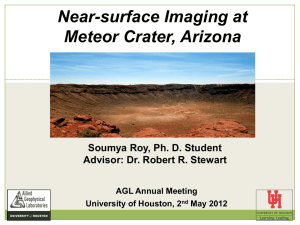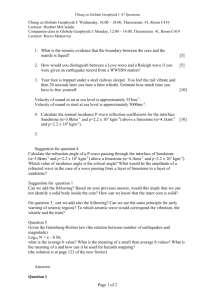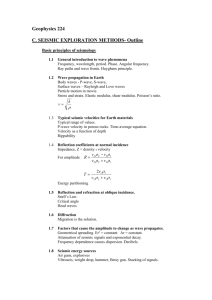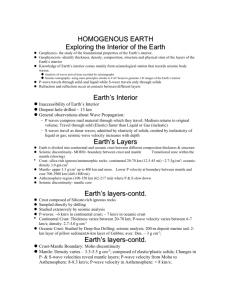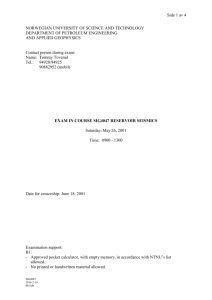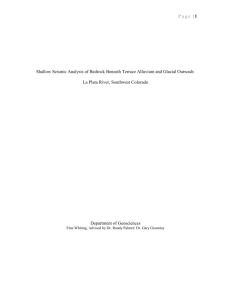jgrf852-sup-0002-txts01
advertisement
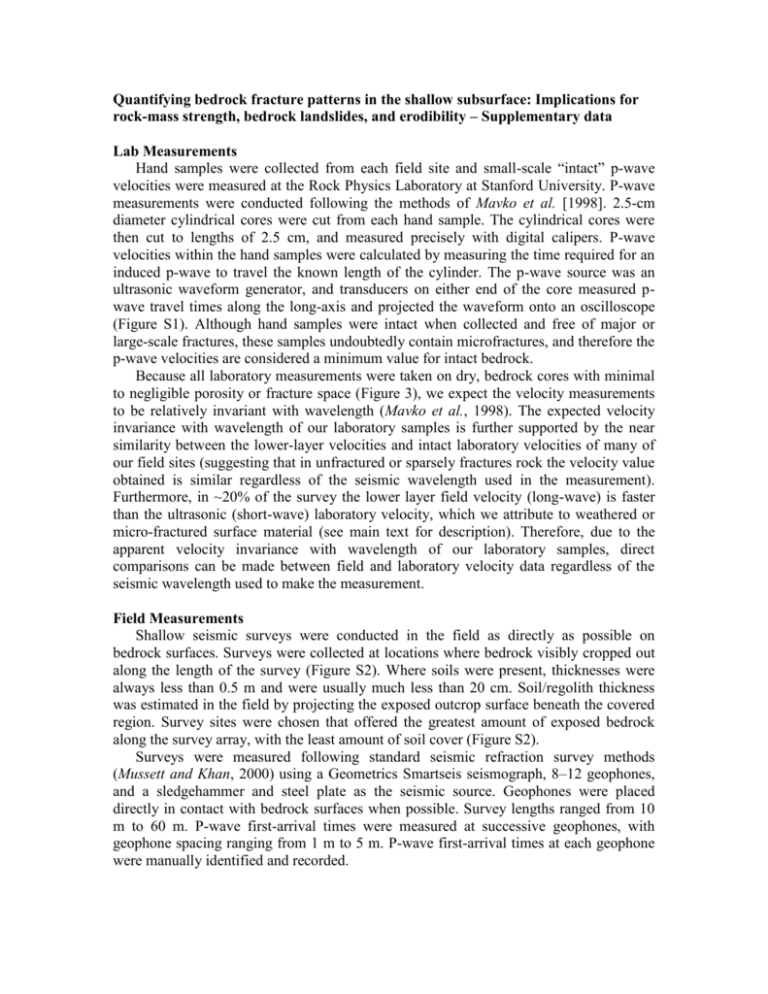
Quantifying bedrock fracture patterns in the shallow subsurface: Implications for rock-mass strength, bedrock landslides, and erodibility – Supplementary data Lab Measurements Hand samples were collected from each field site and small-scale “intact” p-wave velocities were measured at the Rock Physics Laboratory at Stanford University. P-wave measurements were conducted following the methods of Mavko et al. [1998]. 2.5-cm diameter cylindrical cores were cut from each hand sample. The cylindrical cores were then cut to lengths of 2.5 cm, and measured precisely with digital calipers. P-wave velocities within the hand samples were calculated by measuring the time required for an induced p-wave to travel the known length of the cylinder. The p-wave source was an ultrasonic waveform generator, and transducers on either end of the core measured pwave travel times along the long-axis and projected the waveform onto an oscilloscope (Figure S1). Although hand samples were intact when collected and free of major or large-scale fractures, these samples undoubtedly contain microfractures, and therefore the p-wave velocities are considered a minimum value for intact bedrock. Because all laboratory measurements were taken on dry, bedrock cores with minimal to negligible porosity or fracture space (Figure 3), we expect the velocity measurements to be relatively invariant with wavelength (Mavko et al., 1998). The expected velocity invariance with wavelength of our laboratory samples is further supported by the near similarity between the lower-layer velocities and intact laboratory velocities of many of our field sites (suggesting that in unfractured or sparsely fractures rock the velocity value obtained is similar regardless of the seismic wavelength used in the measurement). Furthermore, in ~20% of the survey the lower layer field velocity (long-wave) is faster than the ultrasonic (short-wave) laboratory velocity, which we attribute to weathered or micro-fractured surface material (see main text for description). Therefore, due to the apparent velocity invariance with wavelength of our laboratory samples, direct comparisons can be made between field and laboratory velocity data regardless of the seismic wavelength used to make the measurement. Field Measurements Shallow seismic surveys were conducted in the field as directly as possible on bedrock surfaces. Surveys were collected at locations where bedrock visibly cropped out along the length of the survey (Figure S2). Where soils were present, thicknesses were always less than 0.5 m and were usually much less than 20 cm. Soil/regolith thickness was estimated in the field by projecting the exposed outcrop surface beneath the covered region. Survey sites were chosen that offered the greatest amount of exposed bedrock along the survey array, with the least amount of soil cover (Figure S2). Surveys were measured following standard seismic refraction survey methods (Mussett and Khan, 2000) using a Geometrics Smartseis seismograph, 8–12 geophones, and a sledgehammer and steel plate as the seismic source. Geophones were placed directly in contact with bedrock surfaces when possible. Survey lengths ranged from 10 m to 60 m. P-wave first-arrival times were measured at successive geophones, with geophone spacing ranging from 1 m to 5 m. P-wave first-arrival times at each geophone were manually identified and recorded. The data are presented and analyzed as time-distance plots with the distance along the survey profile on the x-axis and the time of the first p-wave arrival at each geophone on the y-axis (Mussett and Khan, 2000). The multi-layer seismic velocity model inverts the field data do determine the best-fit subsurface velocity structure (Figure S3). Although the survey geometry may influence the scale, resolution, and depth of our analysis, we see no correlations between our subsurface analysis and survey/model geometry, suggesting that the survey technique and data processing have minimal to negligible influence on the results (Figure S4). The data display wide variability in subsurface bedrock characteristics, and therefore large datasets are required to identify regional trends or to compare differences between regions. Although our large dataset show clear contrasts in subsurface bedrock characteristics between Fiordland and the Southern Alps of New Zealand (see main text), no statistically significant difference can be discerned between individual rock types within either of the regions (Figure S5). Supplementary Data References Mavko, G., Mukerji, T., Dvorkin J. (1998), The rock physics handbook: Tools for seismic analysis in porous media. New York, Cambridge University Press. Mussett, A. E., and Khan, M. A. (2000), Looking into the earth: An introduction to geological geophysics. New York, Cambridge University Press.


